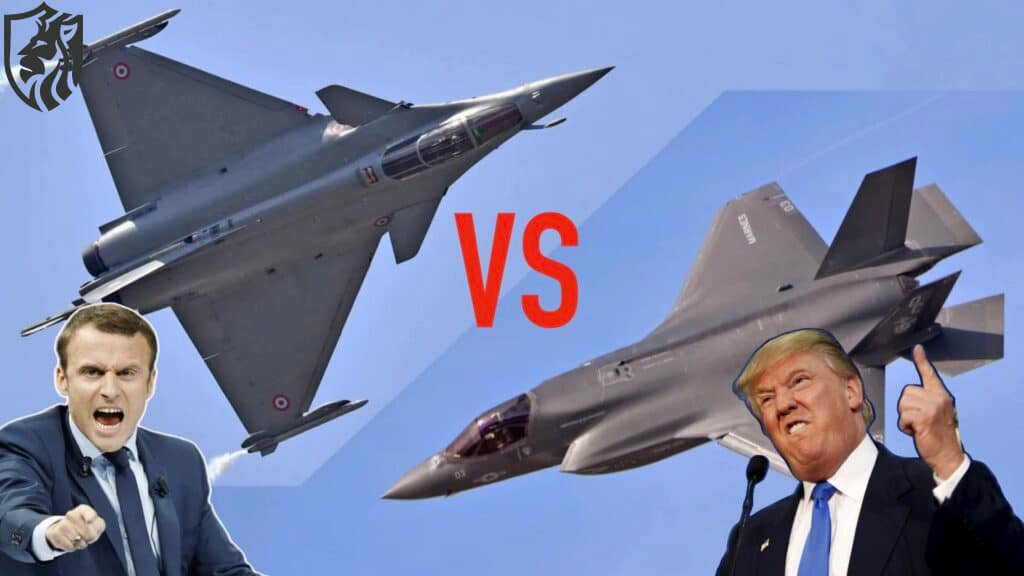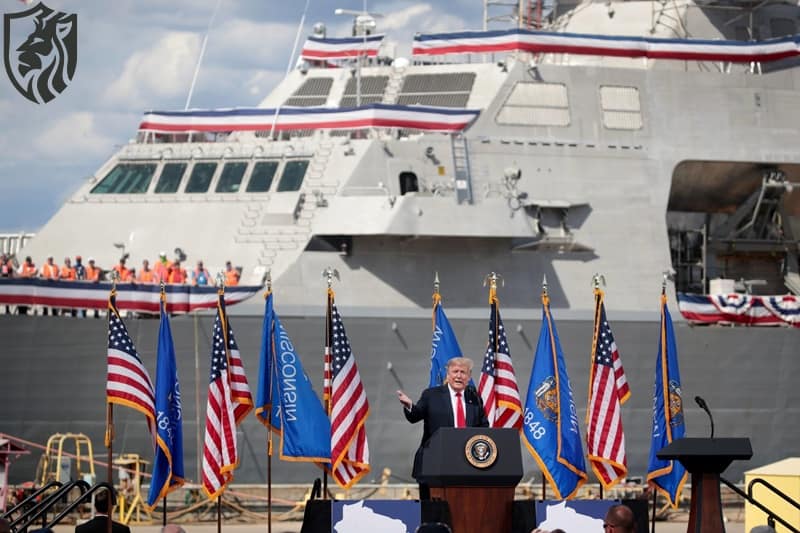

The operation was a response to a militant attack last month that killed 26 tourists in Indian-administered Kashmir, an incident for which New Delhi blamed Islamabad.
Pakistan retaliated with its own air strikes, resulting in fierce fighting between the air forces of both countries. Pakistani authorities claimed that their J-10C fighters, which are armed with PL-15E air-to-air missiles, shot down five Indian planes, including three Rafales, a MiG-29, and a Su-30MKI.
India has not officially admitted these losses; however, visual confirmation supported by The Washington Post showed debris conforming to at least two French-made aircraft—a Rafale and a Mirage 2000—in areas like Wuyan and Akhnoor in Indian-administered Kashmir.
A high-ranking French intelligence officer confirmed to CNN the loss of one Rafale, the first combat loss of this cutting-edge fighter jet in the world.
Such developments have put Rafale, a core component of India’s modernised air force, in the spotlight.
Dassault Aviation
France’s Dassault Aviation builds the Rafale, a twin-engine, multi-role combat aircraft for air dominance, ground attack, and reconnaissance operations.
The Rafale, absorbed by the Indian Air Force in 2019, is equipped with the Thales RBE2 Active Electronically Scanned Array (AESA) radar, which ensures unparalleled target detection and tracking capacities at ranges extending over 100 miles.
Its weapon load includes the MBDA Meteor, a BVR air-to-air missile with a range in excess of 120 miles, and the MICA missile for close-range encounters.
SPECTRA, the electronic warfare system of the jet, provides advanced jamming and decoy capabilities, enhancing its survivability in hostile environments.
India currently has 36 Rafale jets and plans to acquire more under the Multi-Role Fighter Aircraft [MRFA] deal, a $15 billion project for 114 fighters, where the Rafale is one of the leading contenders.
The combat history of the fighter in Libya and Syria and other battles has added to its reputation as a solid 4.5-generation fighter, making claims about its vulnerability in Kashmir all the more extraordinary.
Chengdu Aerospace Corporation of China
The J-10C of Pakistan, produced by Chengdu Aerospace Corporation of China, is a single-engine multirole fighter that commenced service in Pakistan in 2022.
Additionally, as a 4.5-generation platform, it is equipped with an AESA radar and is capable of deploying the PL-15E, an export variant of China’s long-range air-to-air missile, which has a reported range of 90 miles.
While less versatile than the Rafale, the lower cost and compatibility with Chinese systems of the J-10C make it a strong competitor.
In the recent fights, Pakistani authorities claimed that the electronic warfare capabilities of the J-10C, possibly including radar jamming, disrupted Indian operations, forcing Rafale fighter jets to retreat or land in an emergency.
A video from Aklian Kalan village in the state of Punjab showed the pieces of an MBDA MICA missile, one that is suitable for both Rafale and Mirage 2000 aircraft, meaning a jet had been brought down or discarded.
The flight performance of the J-10C has resulted in a 40% increase in the stock value of its manufacturer, AVIC Chengdu Aircraft, this week, indicating growing confidence in Chinese aviation technology.
US media outlets
The rapid spread of news by US media outlets has come under criticism for being at the wrong time and relying on anonymous sources.
Reuters quoted on May 9 that two US officials claimed that Pakistan’s J-10C aircraft shot down at least two Indian planes, including one Rafale, using air-to-air missiles.
On the same day, CNN documented that a French intelligence official authenticated the loss of one Rafale, and The Washington Post verified imagery of the crash site.
The New York Times verified India’s denial of casualties but highlighted the gravity of the battle. The simultaneous release of these accounts, all quoting anonymous officials, raised questions about their intent.

Some commentators, writing in outlets like the Eurasian Times, suggest that the story could be used to promote the F-35, a fifth-generation stealth fighter produced by Lockheed Martin, within India’s competitive defense industry.
The F-35, with its stealth and advanced sensor fusion, is a competitor to the Rafale in the MRFA programme; however, its high price tag—$120-150 million per plane compared to the Rafale’s $288 million for the naval version—has been controversial.
MRFA Deal
India’s aerospace industry is among the largest in the world, driven by its need to counter regional threats from China and Pakistan. Defense contractors will have a significant opportunity with the expected signing of the MRFA deal in the upcoming year.
The Rafale’s recent integration into India’s air force, including training and logistics, gives it a competitive edge.
However, the reported losses in Kashmir can change attitudes. If public and political faith in the Rafale declines, there can be mounting pressure to consider stealth platforms like the F-35, which offers networked warfare capability but requires significant infrastructure outlay.
The United States has always sought to improve defense ties with India as a counterpoint to China, while France emphasises strategic autonomy, meeting India’s desire for autonomous defense capabilities.
Historical examples, including France’s Rafale deals with Egypt and Indonesia in lieu of American planes, underscore this competition.
The conflict between India and Pakistan stems from their 1947 partition, with Kashmir remaining a contentious issue.
1999 Kargil War
Aerial battles have been a constant factor, from the 1999 Kargil War, when India’s Mirage 2000s made pinpoint strikes, to the 2019 Balakot airstrike, when a Pakistani F-16 downed an Indian MiG-21.
The sustained buildup, which includes cutting-edge platforms like the Rafale and J-10C, reflects the revolutionising dynamics of air combat, with beyond-visual-range engagements and electronic warfare playing central roles.
Pakistani claims about Rafale systems being jammed reflect advancements in Chinese electronic countermeasures, which can potentially challenge Western platforms.
India’s purchase of 36 Rafales since 2019 marks its attempt to upgrade its ageing fleet, previously reliant on Russian MiG-29s and Su-30MKIs.
The role of American media in the creation of this narrative is important. The common journalistic practice of relying on unnamed sources raises concerns when stories significantly overlap in timing and tone.

Some discussions on X suggest coordinated efforts to promote the F-35. Indian commentators, including Kerala Congress officials, blame the U.S. for framing earlier Rafale deal controversies.
There is no direct evidence of an organised campaign. However, this trend matches past cases where media framing influenced defense purchases.
U.S. F-16 exports
In the 1980s, French Mirage jets faced criticism over reliability during Gulf wars. Soon after, U.S. F-16 exports to the Middle East increased.
Today, social media fuels the debate. Chinese TikTok users mock India’s Rafale losses, complicating the information space.
Global militaries are analysing the India-Pakistan war for lessons in modern air combat. Rafale’s Meteor missiles and the J-10C’s PL-15E performance will shape future defense policy.
This is especially relevant in the Indo-Pacific, where Chinese and U.S. systems compete. Analysts note that the Rafale and J-10C have similarities.
However, the F-35’s stealth and data sharing offer a significant leap forward. India currently lacks infrastructure to maintain the complex F-35.
This shortage has pushed Rafale to seek alternative markets. The conflict’s outcome could influence China’s defense exports.
Pakistan’s success with the J-10C could boost Beijing’s reputation as a weapons supplier.
The May 10 ceasefire remains fragile. Reports of drone intrusions and blasts in North India persist. The international community continues urging restraint. U.S. Senator JD Vance contacted Indian Prime Minister Narendra Modi over “alarming intelligence”.
This demonstrates Washington’s meticulous manoeuvring in the Indo-Pacific strategy. Trump has pledged to help arrange talks on the Kashmir dispute. This move underscores the global importance of the conflict.
Conclusion
Dassault Aviation’s share price fell after Rafale defeat reports but later recovered. This shows how markets react to battle outcomes.
Quick U.S. media reports on Rafale losses are not unusual. Still, they deserve scrutiny because they align with U.S. defense interests.
Rafale’s proven performance keeps it a strong contender for India’s MRFA contract. However, discussion of its vulnerabilities could influence decision-makers.
Geopolitics, technology, and media narratives will shape India’s choice. These decisions will impact the balance of air power in South Asia.
Whether reports reflect reality or promote the F-35, one fact stands. Defense contractors shape narratives to serve their advantage.
References
- Reuters—Pakistan downs Indian fighter jets
- CNN—French official confirms Rafale loss
- The Washington Post—Imagery confirms Rafale wreckage
- The New York Times—India denies Rafale losses
- EurAsian Times – F-35 vs Rafale debate
- Dassault Aviation—Rafale fighter capabilities
- Lockheed Martin – F-35 Lightning II overview
- GlobalSecurity.org – J-10C fighter aircraft
- Ministry of Defence India – MRFA program details
- AVIC Chengdu Aircraft Industry Group
- DefenseNewsToday – MRFA and Rafale updates
- Pakistan Defense Forum—Regional air force comparisons








